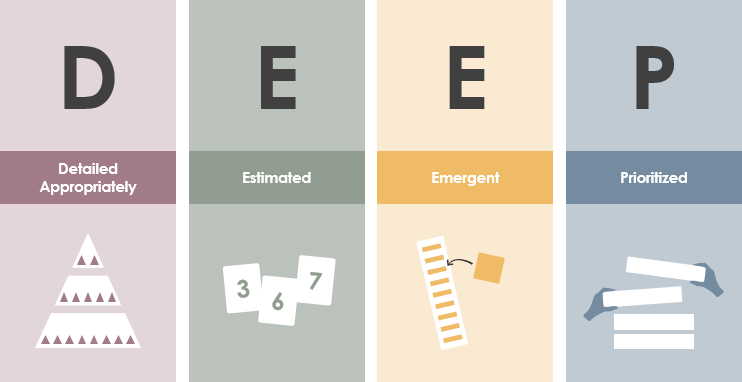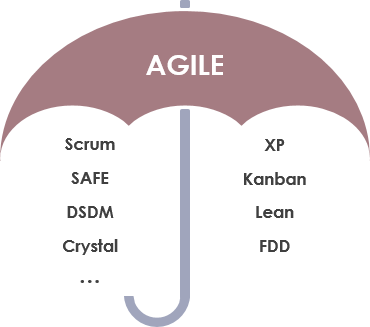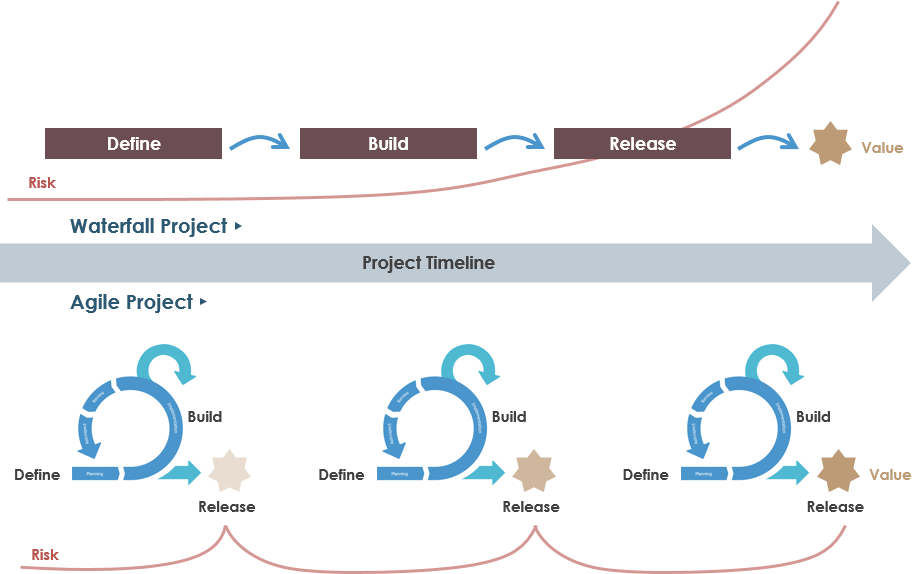Home » Agile & Scrum » Page 4
Introduction The world of Agile project management has seen widespread adoption, and one of its hallmark features is the Sprint. However, Sprints are often misunderstood as being exclusively tied to Scrum. In this session, we'll delve into the concept of Sprints, explore how they relate to the Agile approach, and discover their versatile applications beyond software development. Whether you're new to Agile or looking to broaden your understanding, join us to unlock the potential of Sprints in various domains. What a Sprint? A Sprint is a time-boxed, fixed-length iteration in Agile development methodologies,…
continue reading →
Introduction In the world of Agile software development, the Product Backlog serves as the compass guiding teams toward successful project completion. Within this dynamic backlog, DEEP—a powerful acronym—takes center stage, influencing decisions and actions at every turn. In this article, we'll explore the DEEP principles and their vital role in different stages of the Agile process. From inception to sprint execution and beyond, we'll uncover how Detailed, Emergent, Estimated, and Prioritized Product Backlog items drive Agile teams toward flexibility, adaptability, and value delivery. What is DEEP in Agile DEEP is an acronym used…
continue reading →
Introduction In today's fast-paced and ever-evolving business landscape, agility has become more than just a buzzword; it's a necessity. Agile methodologies have emerged as a transformative approach that empowers teams and organizations to thrive in an environment characterized by uncertainty and rapid change. At the core of this agile revolution lies the Agile Manifesto, a set of values and principles that serve as a guiding light for businesses seeking to innovate, adapt swiftly, and manage risk effectively. Understanding the Agile Umbrella Agile, as a term, serves as an umbrella encompassing a wide array…
continue reading →
Introduction In the world of project management, selecting the appropriate methodology is akin to choosing the foundation upon which a project will stand. Two methodologies, Agile and Waterfall, have long been at the forefront of this decision-making process. Agile, known for its flexibility and adaptability, stands in stark contrast to Waterfall, which adheres to a structured and sequential path. The choice between these two approaches can significantly impact a project's success. In this article, we will explore the key characteristics of Agile and Waterfall methodologies, examining their strengths and weaknesses, and providing insights…
continue reading →
Introduction In the fast-paced world of software development, effective product backlog refinement is the key to success. It's the process that ensures your team is working on the right priorities and delivering value to your customers consistently. At the heart of this process lies a hierarchical structure comprising User Features, Epics, User Stories, and Tasks. These elements come in various sizes, with User Features encompassing months of work, Epics requiring weeks, User Stories taking days, and Tasks breaking down to just hours of effort. In this article, we'll explore how these components interconnect…
continue reading →
Introduction In the dynamic realm of Agile software development, a web of interconnected concepts ensures the seamless flow of work, the attainment of high-quality outcomes, and the meeting of project objectives. At the heart of this ecosystem are the Product Backlog, Sprint Planning, Definition of Ready, Sprint, Definition of Done, and Deliverables. Understanding how these elements relate to each other is essential for Agile teams striving to deliver value with precision and efficiency. This article explores these fundamental Agile concepts and their intricate connections, shedding light on how they collectively shape the Agile…
continue reading →
Introduction In the world of Agile software development, the sprint backlog plays a pivotal role in ensuring that projects are delivered on time, with the right features, and at the highest quality possible. It's an essential tool that helps Agile teams plan, organize, and execute their work efficiently. In this article, we'll delve into the purpose of the sprint backlog and provide practical examples of how it functions within Agile development. What is a Sprint Backlog? A sprint backlog is a subset of the product backlog, which is a prioritized list of features,…
continue reading →
Introduction In the realm of Agile development, Product Backlog and Sprint Backlog are two essential concepts that play a pivotal role in managing and delivering successful software projects. They are both crucial components of the Scrum framework, a popular Agile methodology. To effectively navigate the world of Scrum and Agile development, it's essential to understand the differences between these two backlogs and how they work in tandem. In this article, we will explore Product Backlog and Sprint Backlog, providing examples to illustrate their distinctions and functions. Product Backlog The Product Backlog is the…
continue reading →
In the world of Agile software development, the Sprint Planning Meeting stands as a crucial event that sets the tone and direction for the upcoming sprint. This collaborative gathering is where teams come together to define their goals, allocate tasks, and ensure everyone is on the same page. In this article, we will explore the importance of Sprint Planning Meetings, provide a meeting template, and offer an example to illustrate the process. The Significance of Sprint Planning Meetings Sprint Planning Meetings are a cornerstone of the Scrum framework, one of the most widely…
continue reading →
Case Study: Mobile Expense Tracker App As a software development team, you have been tasked with creating a mobile expense tracker app. The app should help users track their daily expenses, categorize spending, and set budget goals. The goal is to provide users with a user-friendly, efficient, and feature-rich application that can be used on both Android and iOS platforms. To simulate a product backlog for this project, let’s create a table with several user stories, their priorities, estimations (in story points), and acceptance criteria. User Story Priority Estimation Acceptance Criteria User Authentication…
continue reading →






